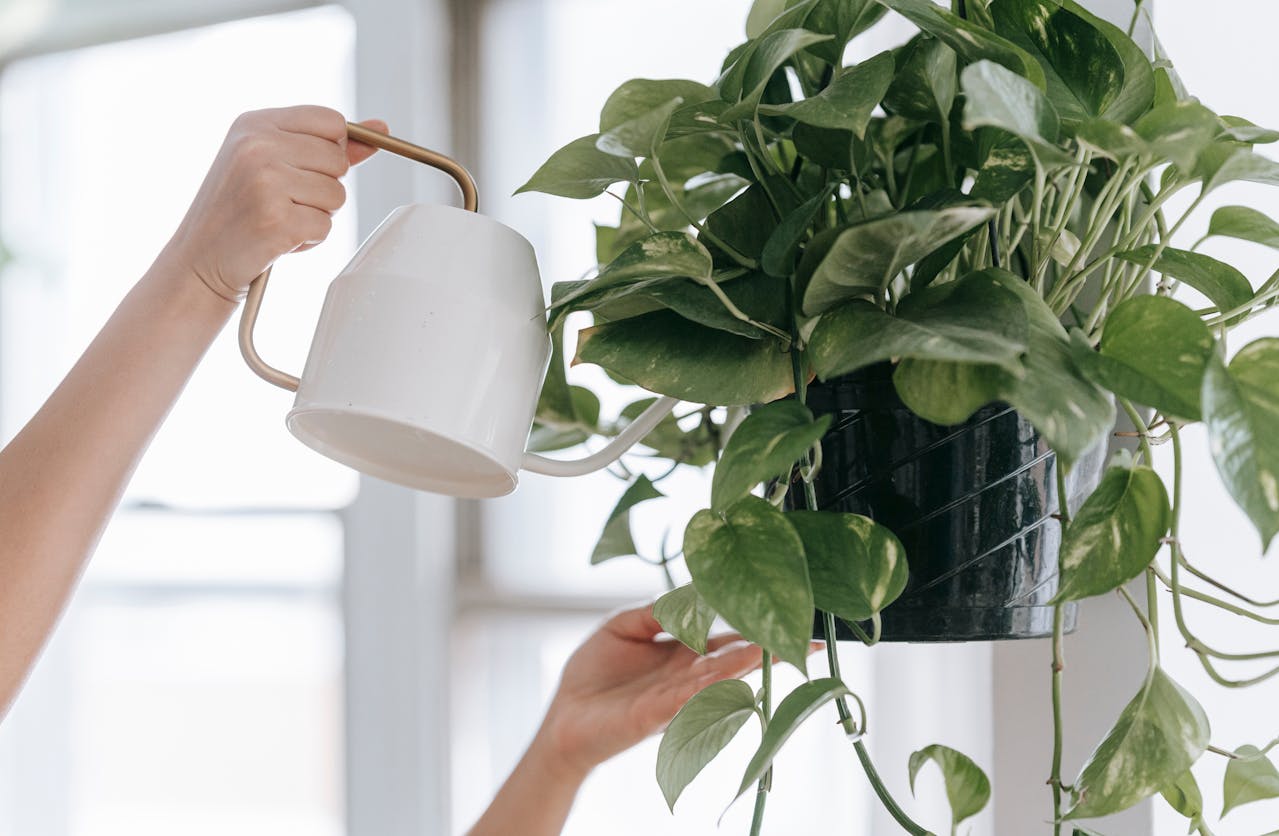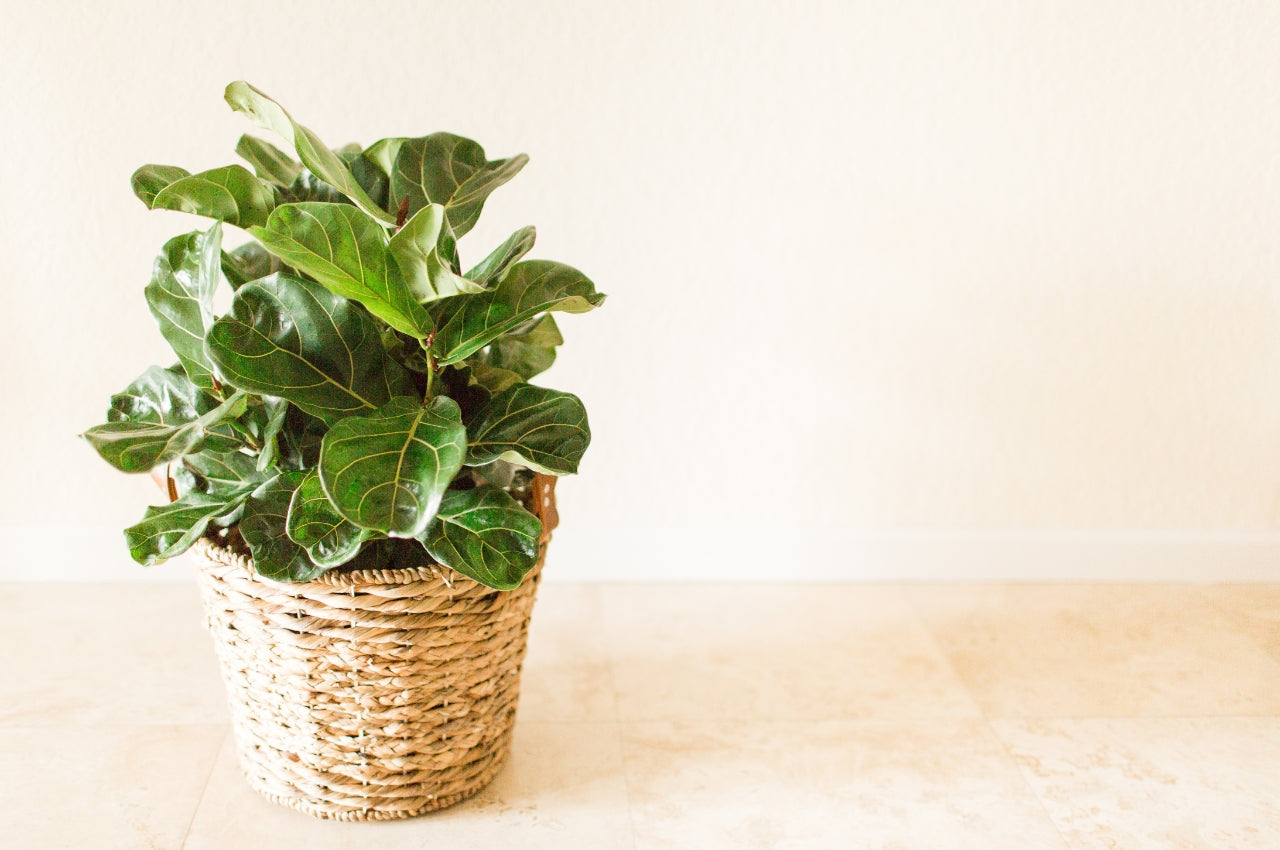The Golden Pothos is an excellent choice for a new gardener who's looking for an easy-to-care-for indoor plant. Novices and experts alike love this popular houseplant not just for its beautiful trailing stems but also because it’s a hardy species built to survive a variety of conditions.
In this post, we’re diving into why the Pothos is a perfect houseplant for beginners. Plus, we’ll tackle some of the most common questions people have about it.
What Is Pothos Plant?
First things first, just what is a pothos plant? The Pothos plant, scientific name Epipremnum aureum, aka devil's ivy, golden pothos, or money plant, is a hardy species of trailing vine with heart-shaped leaves. Its color is pretty unique, mostly bright green with splashes of white and yellow.
This species has aerial roots, allowing them to climb or trail. Although it's popularly known as an indoor plant, the devil's ivy also thrives outdoors. When grown outside, it reaches an incredible height, especially when it has the chance to attach to big trees. The leaves also grow many times larger.
The Golden Pothos make for a beautiful houseplant, which is among the reasons why it's so popular. Many homeowners display their pothos as hanging plants, allowing those lovely trailing stems to flow down. But the trend these days is simpler and more low-key—put pothos in cute pots, place them on shelves, and let the vines trail naturally, trimming them as needed.
Why Is Pothos Plant Called Devil’s Ivy?
The Pothos Plant is nicknamed Devil's Ivy because it’s very tough to kill, much like the lore that the devil is very hard to kill. Plus, it stays evergreen, even in low-light conditions. This species is so hardy and adaptable. You could leave it without water for a while, and it would still return to good health with just a little bit to drink.

Why Is Pothos Great for Beginners?
The Golden Pothos is a good choice for beginners. It’s also ideal for busy homeowners who can’t devote a lot of time to plant care. As an indoor houseplant, it’s low maintenance as it can survive any light conditions, be it direct or indirect light, and handle irregular watering.
Overwatering is a common issue among houseplants, but not this species. The Golden Pothos can easily survive a waterlogged environment, while other plants might not be so lucky. If its roots start to rot, they can still recover and grow strong again once the conditions improve.
Another thing, this beginner plant is not particularly picky with pots or placement. It can climb up a pole, hang in a basket, or trail down walls and the ceiling like a natural curtain. It even does well as a low-maintenance desk plant, thriving in just a glass of water.
Where Do Pothos Plants Come From?
They (as in Wikipedia and Britannica) say that Epipremnum aureum’s native environment is in certain areas of the Pacific Islands and Southeast Asia. But this tropical plant has become naturalized in many parts of Asia, growing wildly even as far as Australia and South Africa.
Of course, you can find the Golden Pothos, including other pothos varieties, across the globe these days as indoor plants. You can find them in apartments, cafes, shops, and restaurants— practically everywhere. When you search “pothos plant near me” you'll most likely find that a shop in your local area sells one.
Can Pothos Plant Grow in Water?
Yes, it can thrive in just water. A Pothos Plant can actually do just fine without soil, as long as it has water. To emphasize, it grows as well in water as it does in a pot with soil.
To keep it healthy, make sure to change the water every two to three weeks or whenever the water starts to look murky. It also pays to be extra mindful in giving your beloved houseplant the lighting conditions it needs to flourish. In this case, indirect sunlight is better.
Are Pothos Plants Toxic to Cats and Dogs?
Yes, this beautiful houseplant contains toxins, which pose some level of harm to both cats and dogs.
Like other toxic plants, the Golden Pothos contains insoluble calcium oxalates. These are small crystals that work like microscopic needles when chewed and ingested.
The intensity of the symptoms could vary, depending on the amount of Pothos eaten and the animal's size. Symptoms could include pain, vomiting, drooling, swelling on the tongue, and difficulty swallowing. If you suspect that your cat or dog ate parts and bits of the Pothos Plant, contact your vet right away.
Do Pothos Plants Like Coffee Grounds?
Yes, Golden Pothos tends to thrive in soil with coffee grounds.
Coffee grounds are a great source of vitamins and minerals. They contain essential nutrients, such as potassium, magnesium, and phosphorus, which all work together to improve the soil.
Moreover, they can help regulate soil temperature and are an excellent way to encourage growth. They also make the soil more acidic, adding a dose of nitrogen, which is great for the plant.
Does the Golden Pothos have variations?
The classic Golden Pothos is instantly recognizable for its bright green leaves with splashes of white or yellow. However, this versatile plant also comes in stunning variations, including:
- Marble Queen Pothos: This variety features stunning variegated leaves, which is a marbled mix of creamy white and green. It often appears lighter than the classic Golden Pothos. It does best in areas with bright, indirect sunlight, which is important in keeping its lighter color intact.
- Neon Pothos: A bright standout among varieties, the Neon Pothos features solid neon-yellow leaves without the variegated splashes that pothos plants are known for. Like the Marble Queen Pothos, it thrives in bright areas to maintain its vibrant yellow leaves.
- Jade Pothos: Like the Neon Pothos, the Jade Pothos does not have variegated leaves. It has slim, deep green leaves and thrives in low-light conditions.
Can You Grow a Pothos Plant From Stem Cuttings?
Yes, you can grow a Golden Pothos from stem cuttings in either soil or water. Just make sure to take a cutting from a healthy plant, about 4-6 long, with 2-4 leaves. If you decide to grow the roots first in water, wait until they grow 1-2 inches before moving the plant to fresh soil.




Leave a comment
This site is protected by hCaptcha and the hCaptcha Privacy Policy and Terms of Service apply.